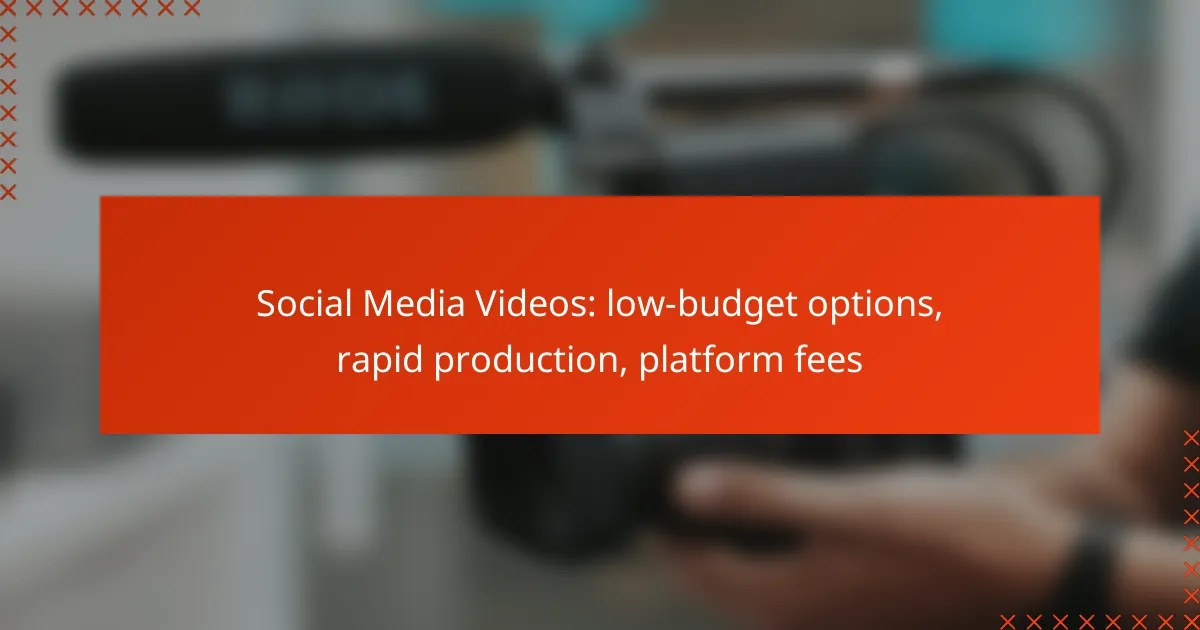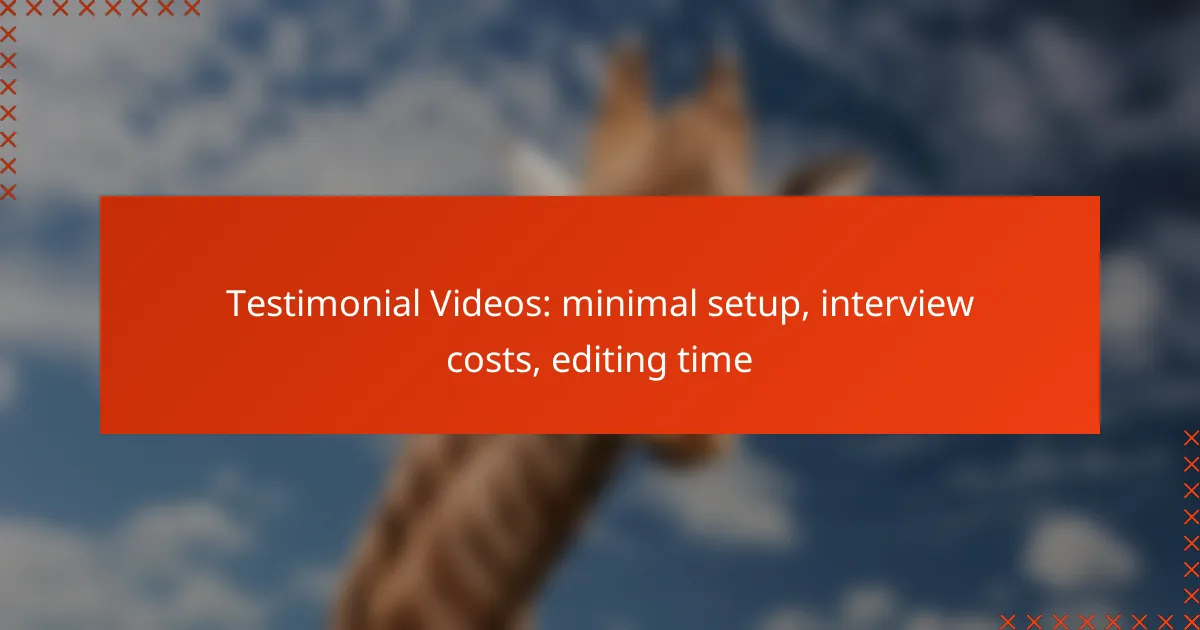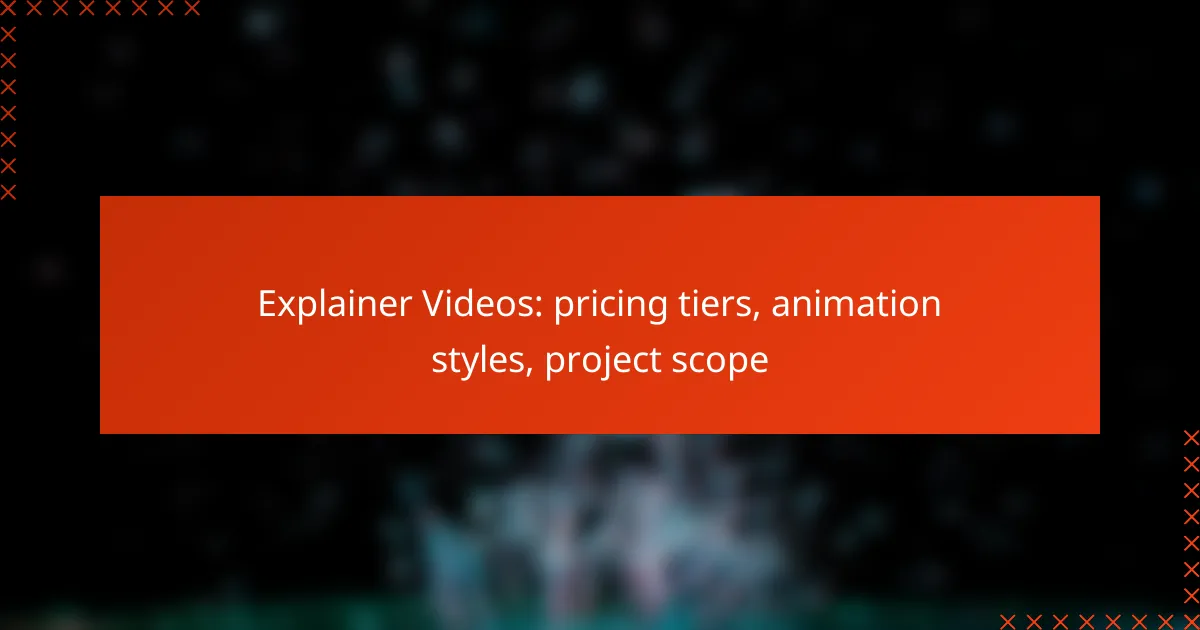Creating engaging social media videos on a budget is entirely feasible with the right strategies. By leveraging smartphones, free editing tools, and DIY resources, creators can produce high-quality content without breaking the bank. Additionally, employing efficient production techniques can help streamline the process, allowing for rapid content creation. It’s also important to consider the varying platform fees associated with video advertising, which can impact your overall budget.
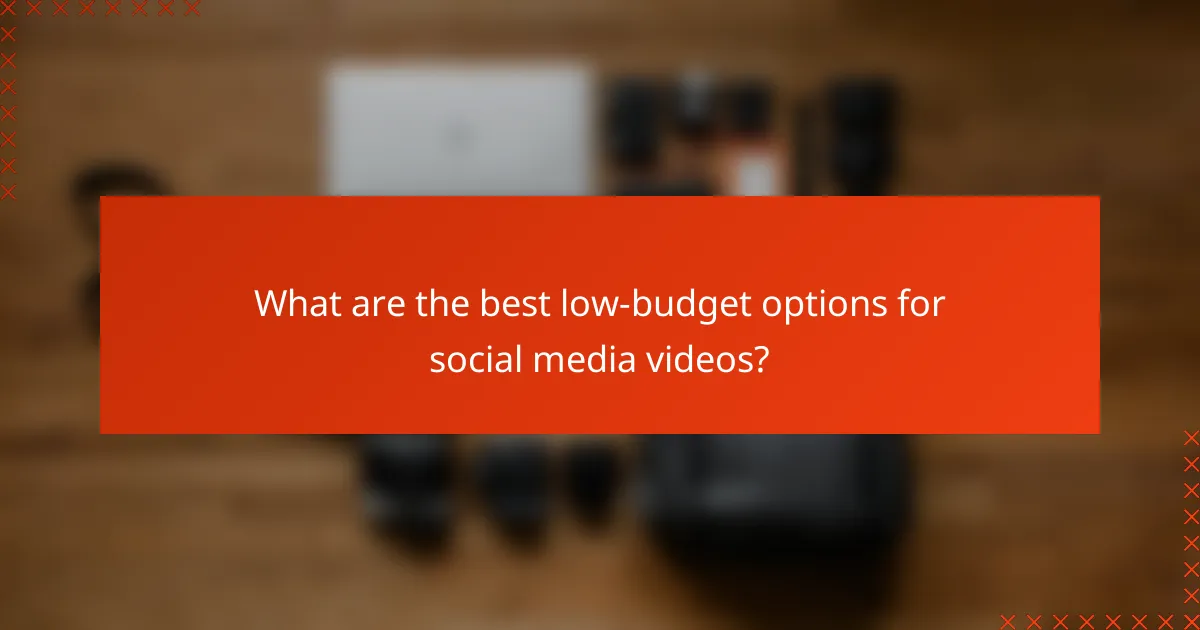
What are the best low-budget options for social media videos?
The best low-budget options for social media videos include using smartphones for filming, free editing software, DIY props, stock footage, and collaborating with influencers. These methods allow creators to produce engaging content without significant financial investment.
Smartphone filming techniques
Smartphones are equipped with high-quality cameras that can capture impressive video footage. To maximize their potential, use natural lighting, stabilize your shots with a tripod or a steady surface, and experiment with different angles to add visual interest.
Consider using the phone’s built-in features, such as slow motion or time-lapse, to enhance your videos. Additionally, familiarize yourself with basic composition rules, like the rule of thirds, to create visually appealing shots.
Free editing software
There are several free editing software options available that can help you polish your videos. Programs like DaVinci Resolve, HitFilm Express, and Lightworks offer robust features for editing without the cost. These tools often include effects, transitions, and color correction capabilities.
When choosing software, consider your operating system and the learning curve associated with each program. Many platforms provide tutorials and community support to help you get started quickly.
DIY props and settings
Creating your own props and settings can significantly reduce costs while adding a personal touch to your videos. Use household items, such as blankets for backdrops or cardboard for props, to create unique scenes that fit your content theme.
Be resourceful and think creatively about how to repurpose items you already own. This approach not only saves money but also encourages innovation in your video production process.
Using stock footage
Stock footage can enhance your videos without the need for extensive filming. Websites like Pexels, Unsplash, and Pixabay offer free stock video clips that can be integrated into your projects. This is particularly useful for filling gaps in your narrative or adding visual context.
When using stock footage, ensure it aligns with your video’s theme and maintains a consistent style. This will help create a cohesive viewing experience for your audience.
Collaborating with influencers
Partnering with influencers can be a cost-effective way to reach a broader audience. Many influencers are open to collaborations that benefit both parties, such as cross-promotions or content exchanges.
When selecting influencers, look for those whose audience aligns with your target demographic. This strategy not only expands your reach but also adds credibility to your content through association.

How can I rapidly produce social media videos?
To rapidly produce social media videos, focus on efficient techniques that streamline filming and editing processes. By utilizing batch filming, template-based editing, live streaming, and scheduling, you can create engaging content quickly and cost-effectively.
Batch filming techniques
Batch filming involves recording multiple videos in one session, which saves time and resources. Plan your content in advance, script your videos, and set up your filming location to maximize efficiency. Aim to film several pieces of content in a single day, which can reduce setup time and improve consistency across your videos.
Consider grouping similar topics or themes to maintain a cohesive style. For example, if you’re creating tutorials, film all related segments back-to-back. This approach not only speeds up production but also allows for easier editing later.
Template-based editing
Using template-based editing can significantly reduce the time spent on post-production. Many video editing software options offer pre-designed templates that you can customize with your branding, text, and visuals. This allows you to maintain a professional look without starting from scratch for each video.
Choose templates that suit your content style and audience preferences. For instance, if you create product reviews, select a template that highlights your product effectively while allowing for quick adjustments. This method can cut editing time down to a fraction, enabling you to publish videos faster.
Utilizing live streaming
Live streaming is an effective way to produce content quickly while engaging directly with your audience. Platforms like Facebook, Instagram, and YouTube allow you to broadcast in real-time, eliminating the need for extensive editing. This approach can foster a sense of community and immediacy, as viewers can interact with you during the stream.
To make the most of live streaming, prepare a loose outline of your content and promote your stream in advance. This ensures that you attract viewers and can address their questions or comments in real-time, enhancing the overall experience.
Scheduling content in advance
Scheduling your content in advance helps maintain a consistent posting schedule, which is crucial for audience engagement. Use social media management tools to plan and automate your posts, allowing you to focus on content creation rather than daily publishing tasks.
Set a content calendar that outlines what and when to post. This can include a mix of pre-recorded videos, live streams, and promotional content. By planning ahead, you can ensure a steady flow of videos while freeing up time for other creative projects.
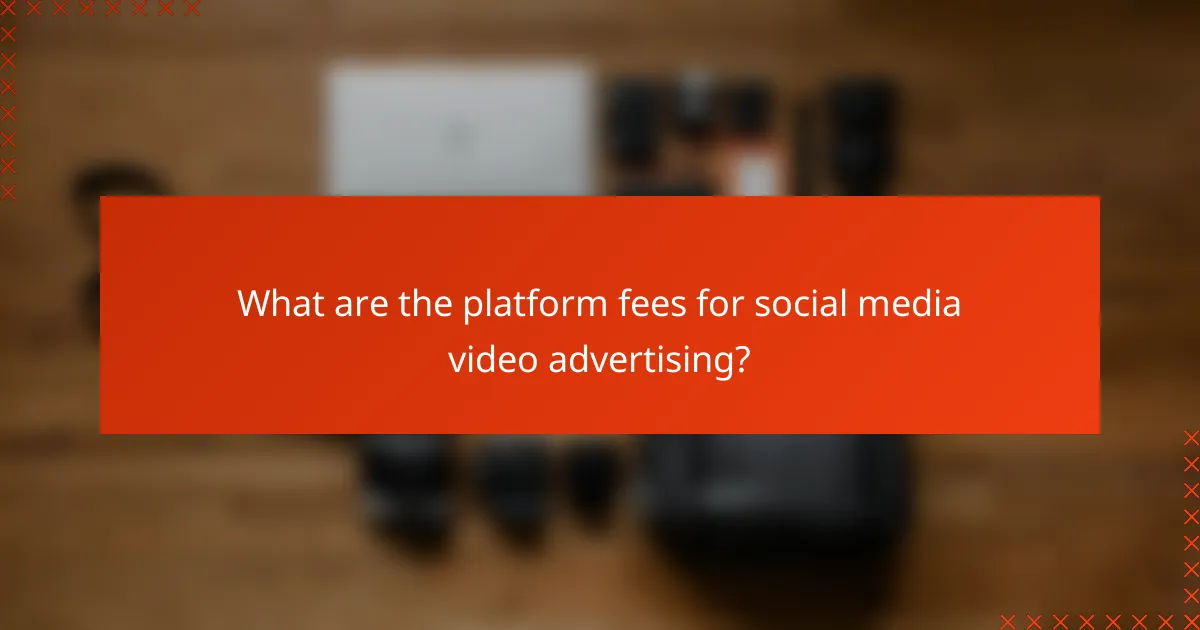
What are the platform fees for social media video advertising?
Platform fees for social media video advertising vary significantly based on the platform and the type of ad campaign. Generally, these fees can include costs per click (CPC), cost per thousand impressions (CPM), or flat rates for specific ad placements.
Facebook ad costs
Facebook ad costs typically range from a few cents to several dollars per click or impression. Advertisers can set daily or lifetime budgets, allowing for flexibility in spending. It’s important to monitor performance metrics to optimize ad spend effectively.
For video ads, the average CPM can be around USD 5 to USD 10, but this can fluctuate based on targeting options and competition. Consider testing different formats and audiences to find the most cost-effective approach.
Instagram promotional fees
Instagram promotional fees are similar to Facebook’s, as both platforms are owned by Meta. Costs can vary widely, with average CPC rates ranging from USD 0.20 to USD 2.00. The visual nature of Instagram often leads to higher engagement, which can justify the investment.
For video ads, expect CPM rates to be in the range of USD 6 to USD 12. Utilizing Instagram Stories for ads can also be a cost-effective way to reach a younger audience, often at a lower CPM than traditional feed ads.
YouTube advertising rates
YouTube advertising rates can vary significantly based on ad format and targeting. The average cost per view (CPV) can range from USD 0.10 to USD 0.30, making it a relatively affordable option for reaching large audiences.
For video ads, CPM rates typically fall between USD 9 and USD 20. Advertisers should consider using skippable ads to maximize reach while controlling costs, as viewers can skip ads after a few seconds.
Twitter video ad pricing
Twitter video ad pricing generally operates on a cost-per-engagement (CPE) model, which can be advantageous for brands looking to drive interactions. Costs can range from USD 0.50 to USD 3.00 per engagement, depending on the campaign’s targeting and objectives.
The average CPM for Twitter video ads is around USD 6 to USD 10. Brands should focus on creating engaging content that encourages retweets and shares to maximize their return on investment.
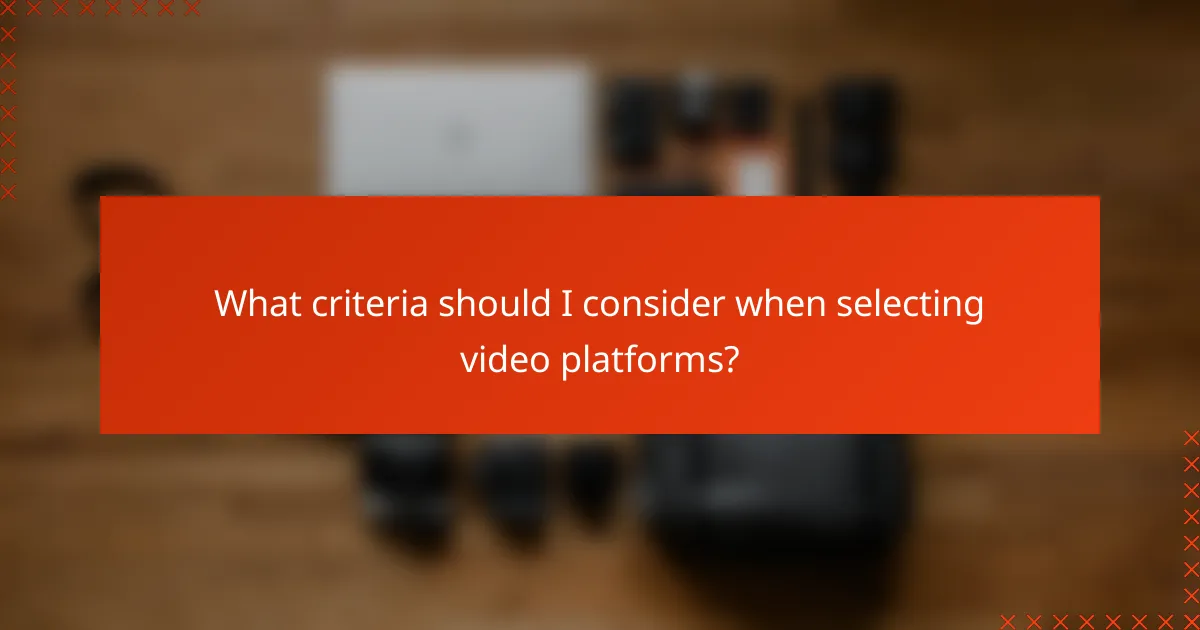
What criteria should I consider when selecting video platforms?
When selecting video platforms, consider factors such as your target audience demographics, content format compatibility, and engagement metrics. These criteria will help you choose the right platform that aligns with your goals and maximizes your reach.
Target audience demographics
Understanding your target audience demographics is crucial for selecting the right video platform. Different platforms attract varying age groups, interests, and geographic locations. For instance, TikTok is popular among younger users, while Facebook has a more diverse age range.
Analyze where your audience spends their time online. Tools like Google Analytics can provide insights into user behavior and preferences, helping you tailor your video content to the right platform.
Content format compatibility
Each video platform supports different content formats, which can influence your production choices. For example, Instagram favors short, visually engaging videos, while YouTube accommodates longer, more in-depth content. Ensure your videos fit the platform’s preferred formats to enhance viewer engagement.
Consider the technical specifications as well, such as video resolution and aspect ratio. Adhering to these requirements can prevent issues during upload and improve the overall viewing experience.
Engagement metrics
Engagement metrics are essential for assessing how well your videos perform on a platform. Look for metrics like views, likes, shares, and comments to gauge audience interaction. Platforms like YouTube provide detailed analytics, allowing you to track viewer retention and engagement over time.
Choose a platform that not only offers robust analytics but also aligns with your engagement goals. For instance, if you aim for high interaction, platforms that support live streaming or community features may be more beneficial.
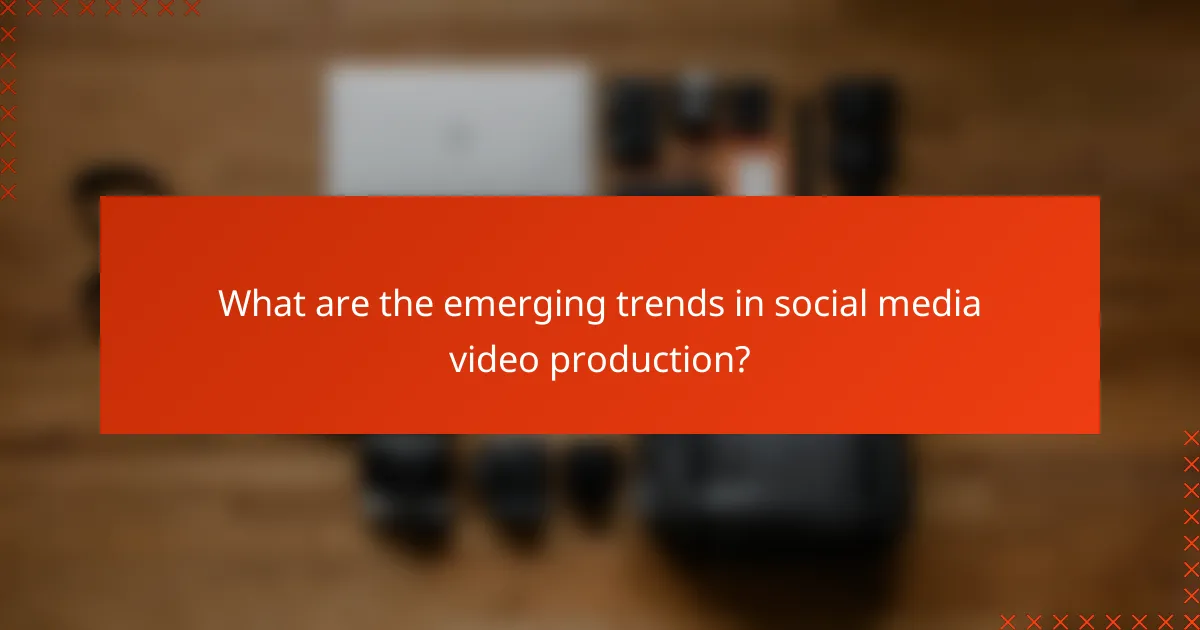
What are the emerging trends in social media video production?
Emerging trends in social media video production focus on low-budget options, rapid production techniques, and adapting to platform fees. Creators are increasingly leveraging short-form content, augmented reality, and interactive elements to engage audiences effectively.
Short-form video popularity
Short-form videos have gained immense popularity on platforms like TikTok, Instagram Reels, and YouTube Shorts. These videos typically last from 15 seconds to a few minutes, making them easy to produce and consume. Their brevity encourages creativity and quick storytelling, appealing to audiences with limited attention spans.
To capitalize on this trend, focus on creating engaging content that delivers value quickly. Use eye-catching visuals and hooks within the first few seconds to capture viewers’ interest. Regularly posting short-form videos can help build a loyal following and increase visibility on social media platforms.
Augmented reality integration
Augmented reality (AR) is becoming a key feature in social media videos, allowing users to interact with digital elements overlaid on their real-world environment. Platforms like Snapchat and Instagram offer AR filters and effects that enhance user engagement and creativity. This technology can be used for fun, educational, or promotional purposes.
When integrating AR into your videos, ensure the effects align with your brand and message. Simple AR filters can be created with minimal investment, making them accessible for low-budget productions. Experiment with different AR tools to find what resonates best with your audience.
Interactive video content
Interactive video content invites viewers to engage actively, often through choices that affect the video’s outcome. This format can significantly enhance viewer retention and satisfaction. Platforms like YouTube and Facebook support interactive features, allowing creators to add polls, clickable links, or branching narratives.
To create effective interactive videos, plan your content carefully to ensure that choices are meaningful and enhance the viewer’s experience. Keep production costs low by using simple editing tools that support interactivity. Monitor viewer engagement metrics to refine your approach and improve future content.
